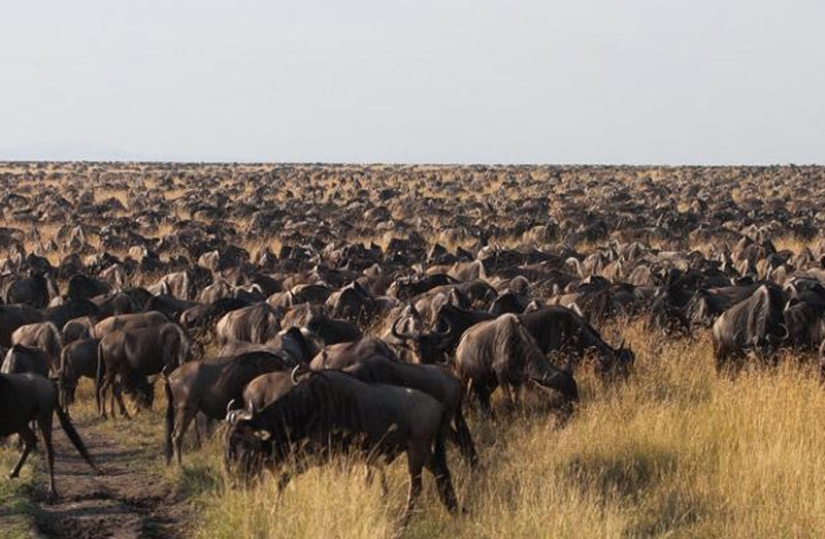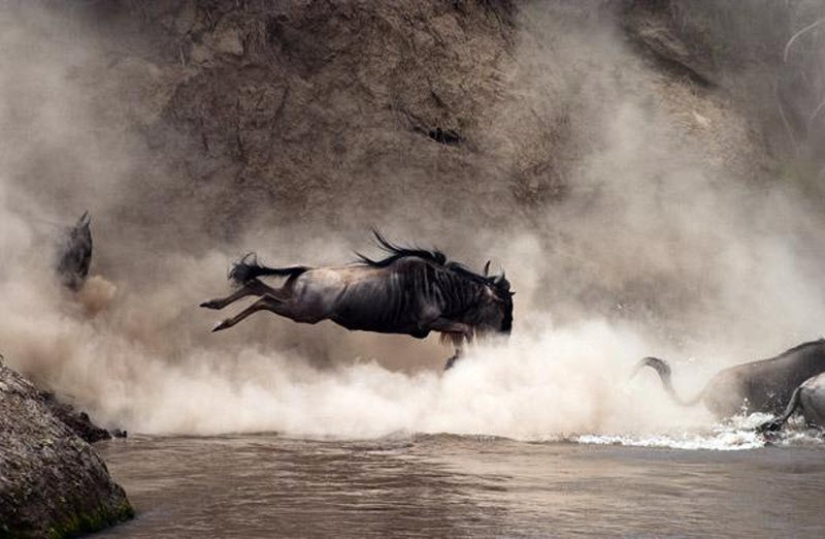Wildebeest migration — a leap of fate
Remember the scene from the cartoon "The Lion King". Yes, yes, the one in the gorge. In life, everything happens almost the same way — herds of thousands of individuals rush forward, sweeping away everything in their path, falling and rising again or not rising at all. These are the laws of wildebeest migration.


Thousands of wildebeest raise pillars of water and dust into the air, crossing the river during one of the largest migrations on the planet.
During this spectacular event, sometimes called the "leap of fate", wildebeest escape to the Mara River in Kenya.

Treading cautiously into the water, which is full of crocodiles lurking in anticipation of prey…
...and hungry land predators are already waiting on the other shore…
The herd makes an incredible powerful noise, plunging into unfamiliar waters.
This event was captured on camera by Czech animal photographer Vaclav Silha, who specially came to Kenya to the Mara River to see this grandiose event with his own eyes.
Crocodiles and other predators are just waiting for weak or young individuals to separate from the main mass.
Wildebeest live in a constant cycle, moving to new pastures depending on the weather. In January and February, females give birth to up to 40,000 cubs within three weeks.
The young immediately join the endless circle of migration between Tanzania and Kenya.
